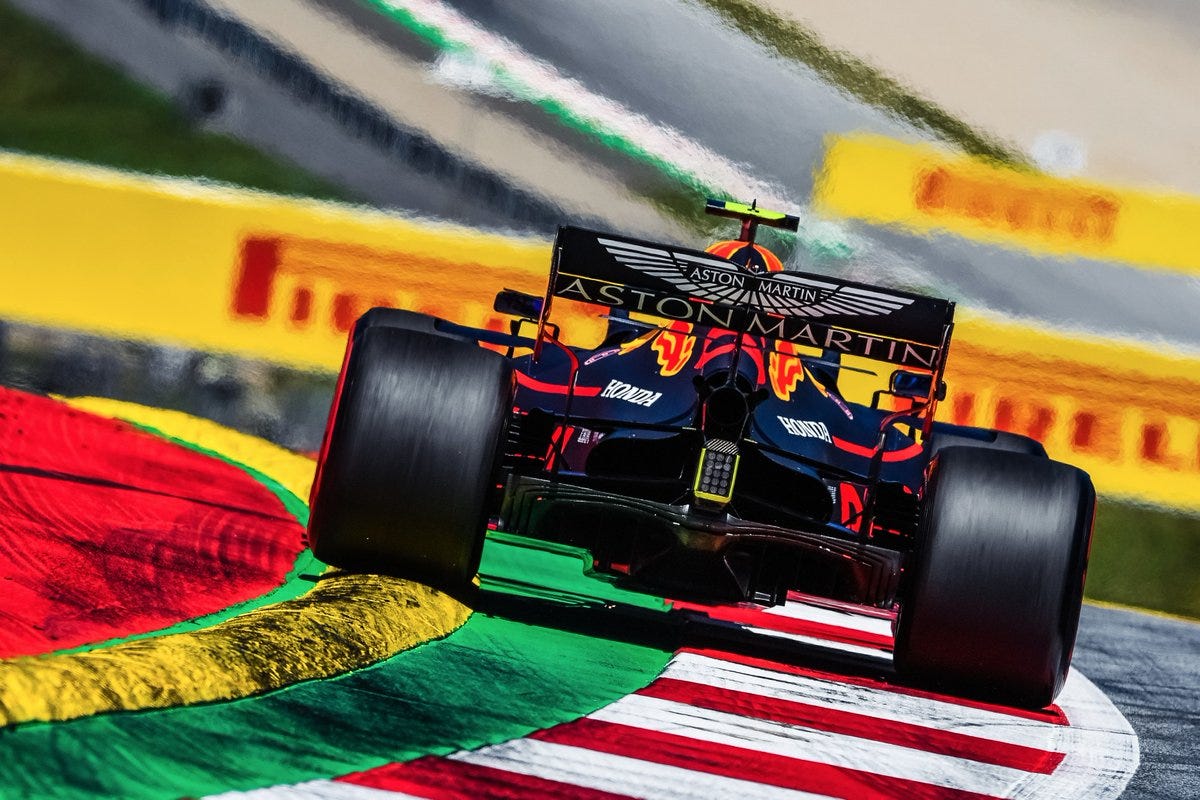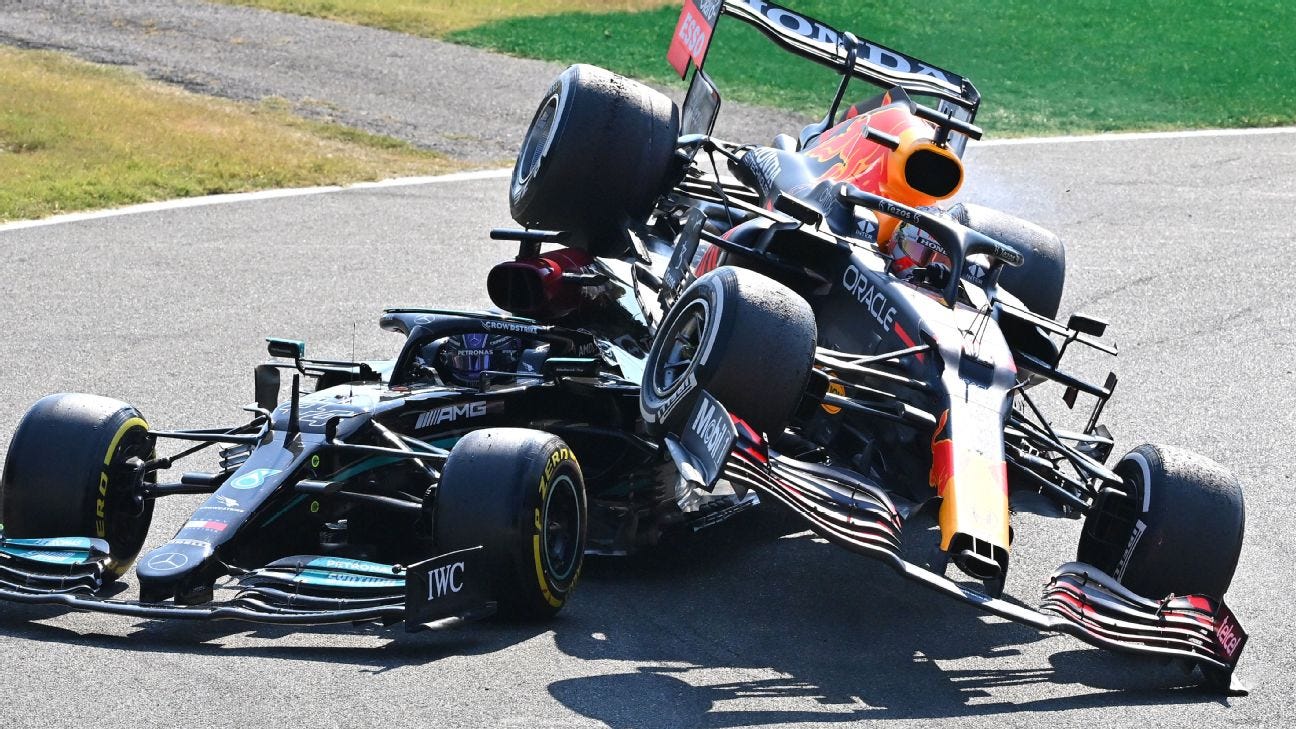The Installation Lap is a weekly Substack column dedicated to helping Americans develop a deeper appreciation for Formula 1.
In the universe of competitive athletics, certain constants remain largely unchallenged - the boundaries that delineate the playing field being one. These contours demarcate the in-bounds and the out-of-bounds and save for the odd optical illusion or dubious refereeing decision, they rarely spark controversy. Yet, at the pinnacle of motorsport, where purpose-built tracks displace the traditional field, this fundamental principle becomes an unsteady variable. The recent Austrian Grand Prix—an exhibition of track limit violations—serves as the latest proof of this phenomenon in Formula 1. Let's dissect this peculiar challenge specific to F1. The Austrian Grand Prix bore witness to an extraordinary number of track limit infringements. The weekend's tally stood close to 1200 instances of track limits violations, ending with eight drivers penalized. Now, it might prompt one to ask: why can't the world's best drivers color within the lines? This critique of drivers is as common as it is trite.
In recent times, track limit issues have sporadically punctuated the Formula 1 season. The FIA, the sports governing body, addresses these by singling out corners at each circuit where they anticipate drivers may venture beyond the white lines. While seemingly straightforward, this approach is not without its limitations.
Formula 1, with its typical proclivity for complexity, muddies the waters. For one, just beyond those white lines lays the most prized treasure in all of F1: time—the irresistible nectar for F1 drivers—beckons just beyond those boundary lines. The drivers are impelled to push their machines to the extremes, inching as close to the edge of the rules as they dare. To overstep is to become a villain, to leave too much margin makes one a fool. In this tightrope act, however, the line is occasionally crossed, resulting in penalties.
Moreover, the current generation of Formula 1 cars—weighing around 798 kilograms—are significantly bulkier than previous generations of Formula 1 cars. This added inertia renders the cars less agile, more difficult to maneuver, and slower to respond, adding to the challenge.
Notably, Alex Albon offered another perspective in a post-race interview. Albon said:
“…the wind is moving 360 degrees around the race track. It was moving 180 degrees around the race track today. You’re getting dirty air, gusty air, literally, I’m not joking you, a little gust, and that’s it. You’re track limits straight away. You can say, yeah, well, bring it back a bit you can’t bring it back. I’ve got Checo behind me, I’ve got George behind me, I’ve got everyone behind me. And the other thing was they were so slow, so slow at giving us the feedback. You know, the FIA…they don’t have the people on the corners to give it quick enough.” “…I basically got told, my first strike was lap 20. I thought - that’s pretty good for me…so that was it. I thought lap 21, got another strike. 22, play it really safe. Got another strike. Lap 23, penalty. By that point, I wasn’t even using the exit curbs. And they’re like ‘Oh sorry, that was from 15 laps ago.’ You can’t react at that point.” - Alex Albon, Austria, 2023
Albon, citing wind's whimsical behavior and its implications for car control, was an interesting factor, difficult to account for as one watches on TV. However, perhaps his most critical point pertained to the delayed feedback from the FIA regarding track limit breaches. Without timely notification, immediate compliance becomes an impossibility. Hence the farce we witnessed in Austria.
Despite persistent debate on resolving this predicament, few solutions have been applied. Some have suggested replacing the concrete run-off area with a gravel trap. Though seemingly effective for F1, it would pose significant challenges for other racing categories - the most notable being Moto GP - and for the track's maintenance, not to mention the added risk of flipping a car upon impact. Solving this problem for F1 with a gravel trap puts the expense and effort on the venue, and increases the danger for other categories of racing that frequent these circuits the other 51 weeks of the year F1 isn’t in town. Not an ideal solution.

Efforts have also been made to discourage drivers from trespassing boundaries using specific curb types, such as the notorious "sausage curb." The “sausage curb” is also not without controversy. While it does a satisfactory job of disincentivizing drivers from exploring the outer limits of corners, it also comes with dangers of its own. When hit at high speeds, the “sausage curb” has a tendency to break car floors and little aerodynamic bits, sending shards of carbon fiber flying into the air and onto the track. The high-speed nature of certain turns, as seen in Austria's Turn 10, can exacerbate this effect, creating very dangerous situations. In fact, it was one of these curbs that was a contributing factor to Lewis and Max’s huge collision in Monza in 2021.

One intriguing proposal involves an automatic engine cut-off, where a car's engine would experience an RPM drop as soon as it breaches track limits. Similarly, a DRS penalty could be implemented—any track limit violation could deactivate the car's DRS for a full racing lap. Immediate consequences like these might just be the deterrent drivers need to respect the boundaries.
Regardless of the potential solutions, their implementation would require agreement between the teams and the FIA—a task easier said than done. Until then, the soap opera of track limit debates will continue, adding a curious subplot to this ever-evolving spectacle. Paraphrasing the bowling great, Walter Sobchak, it seems the FIA's philosophy on track limits could be best described thusly: "Am I the only one around here who gives a shit about the rules? Mark it zero!"






